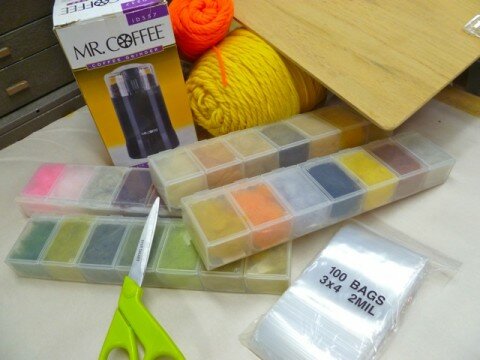
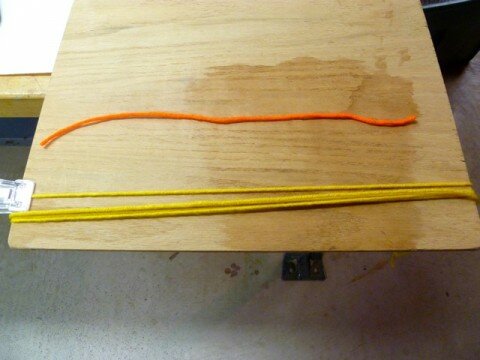
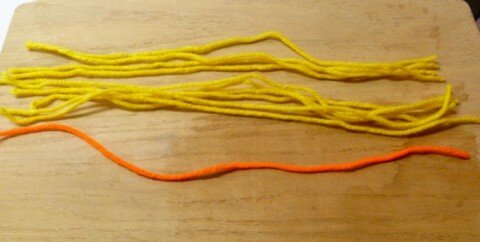
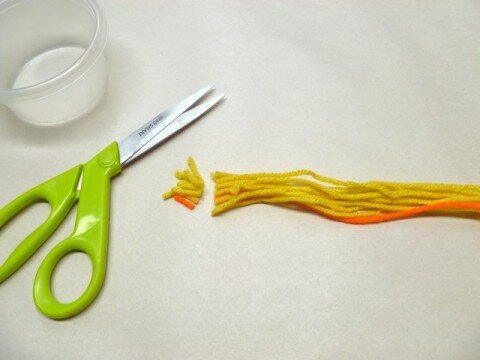
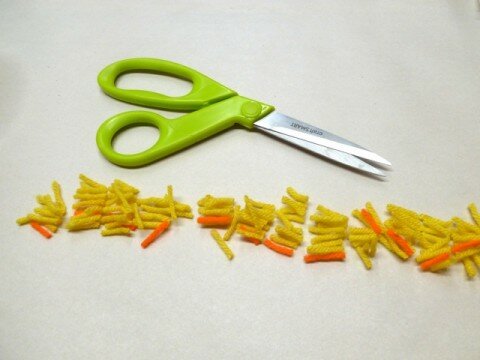
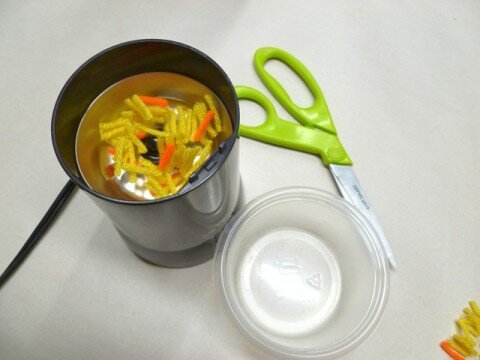
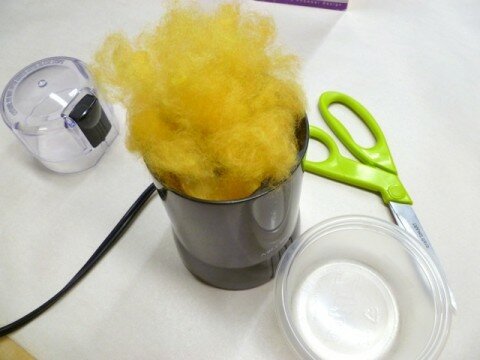
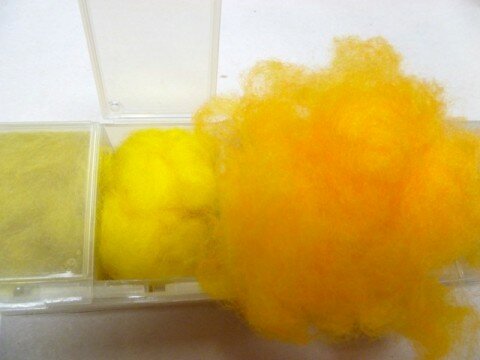
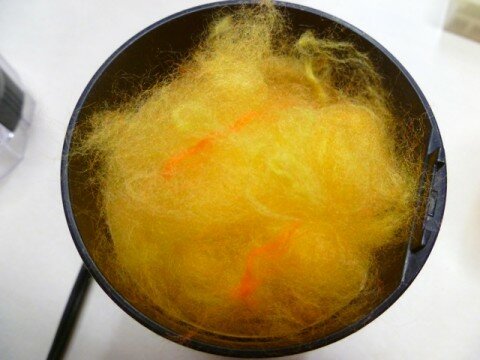
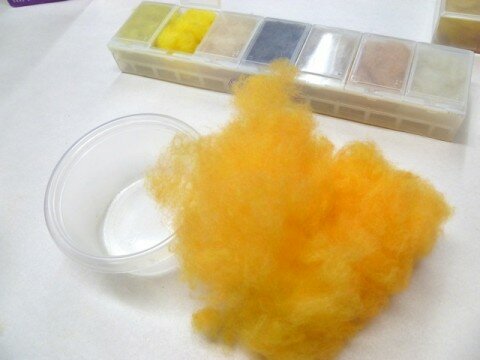
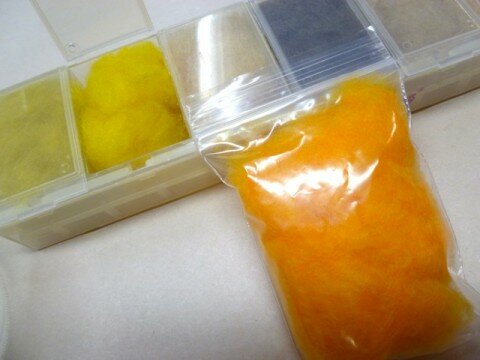
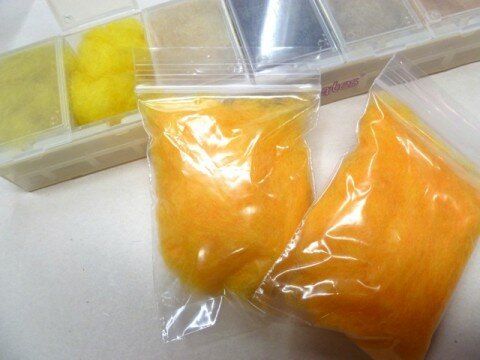
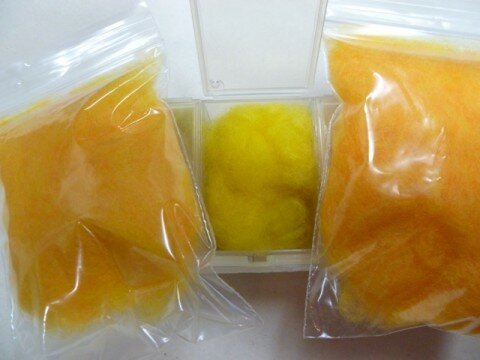













Filed under Doug Korn, Step by Step
Hammer Creek Fly Fishing does a nice job of showing how to tie a Double Bunny in this video. Scott Sanchez originated the pattern and it has become a very popular streamer ever since.
Filed under Step by Step, Streamers
Allan hails from Greenwood, Indiana which is not too far from me. He is good friends with renown fly tyer and bamboo rod builder Tony Spezio. From what Allan tells me, this is a good one to have in your fly box. Here is Allan’s definition of the fly.
This was THE fly on the Madison in Montana this Summer. Unfortunately, it was THE fly for everyone else in the group but me. I was tying it every night because they all wanted several. But I couldn’t catch a derned thing on it, although I did get busted off on big ones a couple of times.

It’s a Red Brassie with Z-lon™ shuck. One of the guys in the group called it a name that wasn’t very nice, so I just used the abbreviations in the title.
Red Brassie with Z-Lon Shuck Pattern:
Hook: TMC 2487 (or equiv.) Size 16-18 (this one’s an 18)
Thread: 8/0 Black
Bead: 3/32″
Ultrawire – Small, red.
Z-Lon – small tuft over the bead
Peacock collar.
Filed under nymphs, Trout flies
Pat Cohen tied this awesome rat fly! He calls it Big Ben. Check out Super Fly for Pat’s flies and other materials.
A caddis variant by Håvard Eide. Check out more of his stuff at dryfly.me.
You can read more details about his new Predator and more on John’s blog.
Nymph by Clark “Cheech” Pierce from FlyFishFood.
This realistic stonefly was tied by Scott Stryker of Stryker’s Custom Flies and Lures.
Normand ties a lot of nice flies. Keep up with him on his blog, Fly Tying: New and Old.
Greg Senyo’s AI pattern tied by Mike Schmidt of Angler’s Choice Flies.
Filed under FrankenFly
I wanted to add a second part to Aaron’s post from yesterday to show off more of his flies. There are some beauties here! Aaron comments on each below.

Wulff Porcupine Bumble Hump

Slate Drake Variant
Here is my “Slate Drake Variant.” It is based on a fly tied by Ray Bergman. Most of my flies are heavily influenced by Ray.
Description: The UPF Slate-Drake Variant is my version of the Isonychia. It is a slight variant of the original. It can also imitate a “White-Gloved Howdy” in a pinch.
I use a quilled body for this fly, because I believe that a quill creates the illusion of segmentation better than a dubbed body. A thin layer of lacquer is applied so the body lasts longer. This is a very durable and productive fly!
If you own a split-cane rod, you know that there isn’t anything better than strategically placing a classic fly in front of a fish, and seeing that fish take it. This fly is tied in the classic Catskills style of flies, and is a perfect match for that little bamboo fly chucker.

Superior Loch Wet
This fly was created based on some of Davie McPhail’s patterns. In essence, this fly can be dead-drifted, swung, and even striped as a streamer. In slower moving water the soft-hackles move generously. And in faster moving water, the buck tail underwing give the fly much needed structure. I tied it this way, so it would collapse.

Blue Bird
Here is the “Blue Bird” Dry. I created this pattern as an attractor for fishing water with pressure. It is also a great searching pattern.

Green Lantern dry fly
Here is the photo for my “Green Lantern” dry fly. It can be used for the Sulfur hatch, or it is a great attractor fly. The body is made up of porcupine quill, which I have been using heavily for my dry fly bodies.

Jo Hex
Description: The creator of this fly is Josephine Sedlecky-Borsum. She was the owner of Ed’s Sport Shop in Baldwin, Michigan from 1945 to 1992. This pattern was discovered while rummaging through a collection of her flies supplied by David Stewart. David Roller, who used to work with ‘Jo’, confirmed that this was one of her early hex patterns most probably created in the early 1950’s. This early pattern was to be modified over the years into several of her other creations.
The pattern is timeless and is the original version; preserving the nostalgia of classic Michigan patterns. However, I tie this fly with premium modern materials, that allow the fly to last longer, and only use quality hooks. I adhere to the classic patterns, because that is what they are “Classic Michigan Flies” that are still extremely productive. You can not buy these patterns in fly shops, and most people have never heard of them because of the standardization that overseas’ fly manufactures have brought to the industry.
This pattern is a MUST for people who fish the Manistee, Pere Marquette, and branches of the Au Sable. If you fish “downstate,” this pattern is a must for fishing the “Giant Michigan Mayfly Hatch”.
Filed under Trout flies
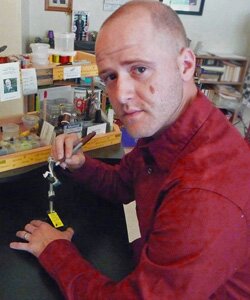
Aaron Marzec
Currently, Aaron lives in both the Upper Peninsula of Michigan and in the Twin-Cities area of Minnesota. He is a Union Refrigeration Pipefitter and is in high demand, but he does an excellent job of balancing his day job with his passions….fly fishing and fly tying.
Aaron got into fly fishing while attending Northern Michigan University (Go Wildcats!). Before class, he would spend time on the Carp River. Between classes he would spend time on the Dead River near the Jacobetti Center. After class (sometimes instead of class…) he would hike towards Big Bay, MI and fish the Little Garlic River.
Aaron’s father-in Law, Joseph Bicigo, got him into fly-tying and is responsible for his tying addiction (or at least that’s what he tells his wife)! One day, Joe sent Aaron a bag that contained bucktail, squirrel, chipmonk, a vise and some thread. When visiting his in-laws, he and Joe would stay up all night and tie classic Scottish patterns from YouTube. All of those videos started a snowball effect, and soon Aaron has hooked on tying…it became a passion.
With the move to Minnesota, Aaron started studying under Michael Alwin who, at the time, owned the famous “Bob Mitchell’s Fly Shop”. Mike fueled Aaron’s passion for tying classic patterns. Aaron was in heaven…working at a job he loved and during his off time fishing and tying. One day the phone rang and life was about to get even better. Nick Simon from Switchback Gear Exchange called and said he had heard about Aaron’s flies and asked him to send him some as he was interested in having locally tied flies at his shop. One thing lead to another and Aaron found himself tying for Nick as well as 10 additional shops in Michigan, one in Wisconsin, two in Minnesota, and a numerous other fly shops around the US and Canada. Upper Peninsula Flies was born, and currently ties for 20+ shops.
Aaron considers the small streams in the Upper Peninsula of Michigan his home waters. “There is just something about losing yourself in the woods. When you are alone, and the only thing with you is your Maker; a person can find themself.” He ties primarily for the rivers, streams, and tributaries of Michigan. He also ties for South Eastern Minnesota streams and rivers, and West Central Wisconsin. He is a self-professed “Midwestern Fly-tier.”
Through his studies, he developed a deep and abiding passion for everything “Ray Bergman”. Through his travels, he has had the good fortune to meet Don Bastian who shares his love and appreciation of the classics. As Don once told him, “Ray Bergmans plates are nice, but seeing and holding the real fly in your hand is where the joy really starts”.
Aaron also loves the Catskills style of fly tying. “The flies are sparsely tied, simple, and elegant. There isn’t much material on the fly to hide poor tying or poor skill. “What you see is what you get. You must make every turn of the thread count.
If you want to purchase flies tied by Aaron, head over to MyFlies.com.
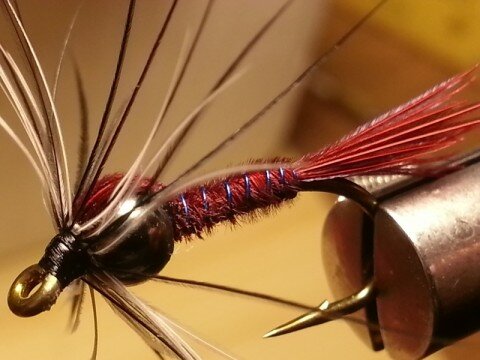
Depth Charge Spiderman
Description: The “Depth Charge Spider-Man” is an original pattern that I created for Steelhead fishing in deep fast moving water that sees quite a bit of pressure. When fishing water that many others fish, sometimes it is the little things that will make a steelhead bite or not bite.
In many studies, it has been reported that trout see in the Ultra-violet light spectrum, so I tied this using UV material. The tungsten bead acts as the thorax and gets the fly down quickly to where the fish are holding and also adds a bit of flash that can trigger a strike. The hackle used is white and black Hungarian partridge; combined, allow the nymph to be fished in clear and off-color water.
In the smaller sizes, the Depth Charge Spider-Man is an excellent trout fly!
What it imitates: Attractor nymph
When to fish it: All the time
Where to fish it: In rivers and streams that are known to hold steelhead, salmon, and resident trout. This fly was designed for fishing deep runs. The movement of the soft-hackles induce an effect of something living.
How to fish it: Any waters that hold steelhead, salmon, or trout. Any nymphing technique; with or without an indicator, just make sure it is dead drifted.
Filed under Steelhead
 I have since my youth loved fishing, but I became a fisherman when I discovered fly fishing. My life as a fly fisherman started with tying flies, tried to fish with the fly for the first time in the summer of 2005, thought it was interesting but nothing more happened than that. During the Christmas holidays 2005 and 2006 I visited a fishing store and they had a beginners kit on sale, felt kind of bored at the moment and thought I could give it a go. Discovered that tying flies was a great recreation, tying flies made me calm and I found it to be a great way to empty heavy thoughts gathered at work.
I have since my youth loved fishing, but I became a fisherman when I discovered fly fishing. My life as a fly fisherman started with tying flies, tried to fish with the fly for the first time in the summer of 2005, thought it was interesting but nothing more happened than that. During the Christmas holidays 2005 and 2006 I visited a fishing store and they had a beginners kit on sale, felt kind of bored at the moment and thought I could give it a go. Discovered that tying flies was a great recreation, tying flies made me calm and I found it to be a great way to empty heavy thoughts gathered at work.
After a while I felt ready to give the more advanced tying a chance, found that I really loved the traditional patterns, especially the early American dry flies, the so called “Catskill style dry flies”. Another genre that has caught my attention is the English “North Country flies”. Basically I love everything traditionally, I read an article once that caught my Intrest, the headline was the flyfishers club of Londons mantra “There is more to fishing than catching fish”….Those words says it all.
I have tied flies at several fairs here in Sweden, also tied abroad, once at The International Tying symposium in Newark and several times at the British International Flyfair. At these events I have meet loads people who have Inspired me, people like Dave Brandt, Mike Valla and a few who really have helped me out and that I nowadays call my friends Ted Patlen and Joe Bonasera.

Quill Gordon
My absolute favourite Catskill dry is Theodore Gordons Quill Gordon, this is one both lovely to lay your eyes on and a killer fly in your box. My number two fly is Art Flicks Red Quill a fly that tie more than I fish, it´s simply so beautifull Ijust have to tie now and then. Third and probably the fly I use the most, Grey Fox Variant, both stunning looks and a great fish catcher. I have also made a Catskill Style dr on my own, a tribute to one of the greatest of them all, Mary Dette, I simply call the fly The Mary Dette. It´s not an imitation of anything, more of a freestylefly created for looks. I used materials from one of Mary´s favourite ties, The Coffin Fly.

Red Quill
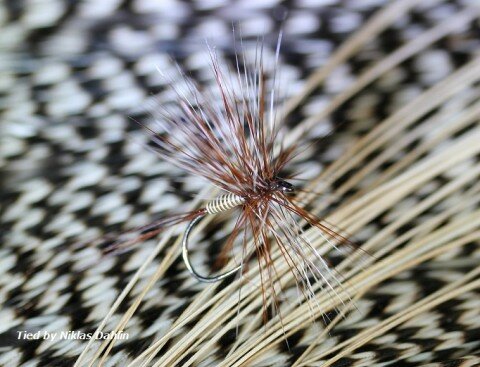
Grey Fox Variant
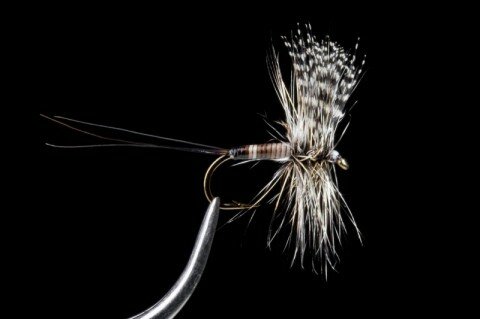
Mary Dette
When I tie my flies It never about producing, well off course a night before a fishing session, but mainly it a way of recreation and to create something that I will be really satisfied with. The Catskill style dry flies suits this urge perfectly, as they are appealing for both the fisherman and the fish´s eyes.
When I don’t tie flies I do my best with inspiring my staff to sell used cars. I live in Uppsala north of Stockholm, there I live in a house with my fiancé, two kids, a dog and yes… I do drive a Volvo station wagon.
Niklas Dahlin
www.mulhonken.blogspot.com
Filed under Catskill
The next video in the Nick Granato series…..the Maximum Cowbell. Loaded with materials, this articulated streamer is a full bodied beast. Video production and tying by Brian Wise of Fly Fishing the Ozarks.
Recipe:
Rear Hook
Hook – Gamakatsu SP11 #1
Flash – Shimmer Fringe
Tail 1 – Saddle Hackle
Tail 2/Wing – Rabbit Strip
Body – Polar Chenille
Body Hotspot – Chubby Dub
Front Hook
Hook – Owner Sproat #1/0
Eyes – Aluminum Sea Eyes
Body Hotspot – Chubby Dub
Body – Polar Chenille
Body 2 – Schlappen
Head – Laser Dub
Filed under Brian Wise, Step by Step, Streamers
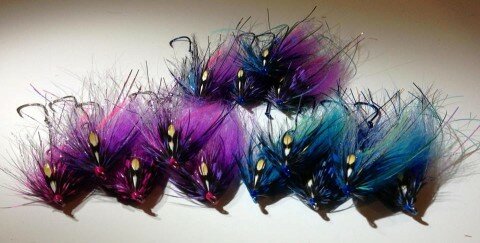
Mad River Outfitters have created a page dedicated to Greg Senyo related fly tying materials. Pretty much everything he has designed/endorses/uses can be found here:
https://www.madriveroutfitters.com/c-531-greg-senyo-stuff.aspx
This is one-stop shopping if you are tying Greg Senyo style flies or just like using his name brand materials.
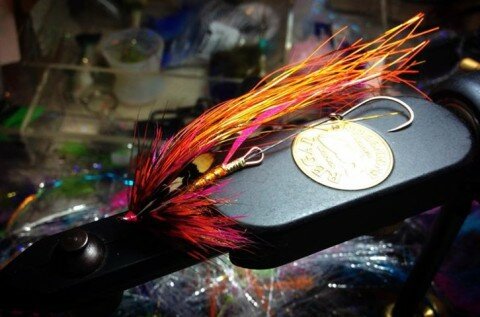
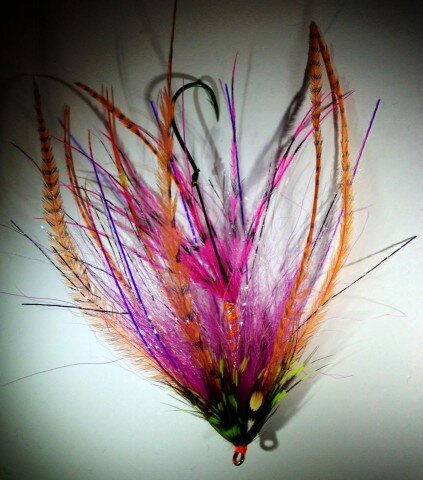
Filed under Steelhead
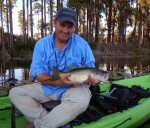
Honey Lake Bass
Balance. We all seek it in our lives and some actually achieve it – at least from time-to- time. The owners and staff of Honey Lake Plantation have not only found that balance, but have made it into an art-form. Balance between luxury and value, between adventure and comfort, and even balance between peaceful relaxation and adrenalin rush.
I had heard about Honey Lake Plantation for a while, but recently had an opportunity to spend three days with my old friend Jon Cave, catching up and catching bass in some of the most pleasant surroundings a guy could ask for.
To be honest, I am always a bit nervous when I hear the phrase “World-class customer service”, it conjures the image of someone following me around with a whisk-broom, or putting a mint on my pillow every time I take a nap. That is not HLP. It really felt more like a welcomed stay with friends, who wanted to be there as much as I did. “What you want, when you want it”, best describes the service to me.

Sunset at Honey Lake
The grounds of the 5000-plus acre plantation are graceful and elegant for sure, and it really does feel like stepping back in time – with one exception- no creaky floors or museum smells. I was stunned to find that all of the buildings on the plantation, save one, were built within past five years. HPL is the brainchild of sportsman Bob Williamson, who purchased the land for personal use, but as he puts it “One thing lead to another, and here we are.” The main building, lodge rooms, cabins (48 rooms in total) and even a chapel were designed by Williamson himself, with every detail honoring the architecture and southern charm of the plantation era.
The Whispering Pines restaurant is in lock-step with the rest of the operation providing traditional regional favorites like fried green tomatoes, wild boar bacon, quail and venison specialties. They even make their own honey and serve their creations on sporting themed dinner-ware designed by HLP Sporting Director William Lamb. Chef Greg Folden, founder of the Tallahassee Area Chef’s Association, was lured to the property after serving as the executive chef at the Tallahassee Civic Center for 22 years. Chef Folden has quickly helped HLP earn the reputation as the southeast’s wedding destination, as well as making Whispering Pines a favorite with locals.
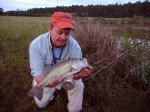
Bass caught by the shore
Once you are well-fed and rested, there is plenty to do on the plantation. Seated in the heart of the Red Hills Region, known for the largest concentration of wild quail anywhere, HPL offers guests the finest quail hunting experience available. This is not the type of place that plants birds for you, it is authentic wild bird shooting. With the kennel of 37 bird dogs from top breeders, your hunt may take place on foot or horseback. A world-class 22 station trap-shooting course will test the expert marksman and will serve to build the skills of those new to the sport.

Tiger Bass
The Honey Lake Plantation accommodations were excellent and the food outstanding, but let’s face it, Jon and I came to fish. And fish we did. HLP is perfect for fly fishermen, offering nearly 2 miles of pristine shoreline for fishing on foot in three different lakes. Or, you may choose sneak out a kayak and spend the evening on the 80-acre Honey Lake, a classic cypress lake, peppered with lily pads and rocky shoreline. You can fish on your own or choose to fish with one of the skilled guides on staff at the plantation. While each lake had a different personality, they all had one thing in common – quality fishing. Much like the bird hunting, this is real fishing. It is not a hatchery and fishing for tiger bass and big largemouths will test your wits – and your tackle.
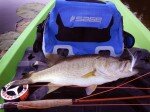
Straw Boss in mouth
Are all of the fish big? No. But plenty of them are. In fact, we caught seven bass in the three-to-six pound range and many more 14-16” fish. Of course, as the story often goes, the big one got away, in fact, two behemoths proved that the lily pads are there for more than just decoration. The bluegills are hearty and aggressive, and for a former Midwesterner like me, that is as good as gold. Popping bugs in a variety of sizes on a six or seven weight rod with a floating line is just right for the HLP waters, although a few of the largest fish fell prey to a subsurface buck tail fly called the “Straw Boss” tied in all white. Angling opportunities of this quality don’t just happen. Williamson, wanting to develop a true trophy fishery, enlisted the expertise of scientist Barry Smith to monitor the lakes and introduce new species – such as the tiger bass – to achieve a perfect and sustainable balance.
Honey Lake Plantation is sort of place that you can bring all of your gear or nothing at all. Bring your expectations and know that they will be met. And if it’s a little balance you are looking for, Honey Lake Plantation is the place to start.
Honey Lake Plantation is located just 30 minutes east of Tallahassee, Florida. Phone (850)948-9111 for more information, or on the web at honeylakeplantation.com.
You can read Joe Mahler’s magazine article on The Straw Boss on Joe’s website here.

Peacock Straw Bosses
This photo displays the Peacock colored Straw Bosses. Joe mentioned the white color used at Honey Lake. His good friend Drew Chicone features a full step-by-step of the white Straw Bosses in his latest book Snook Flies.
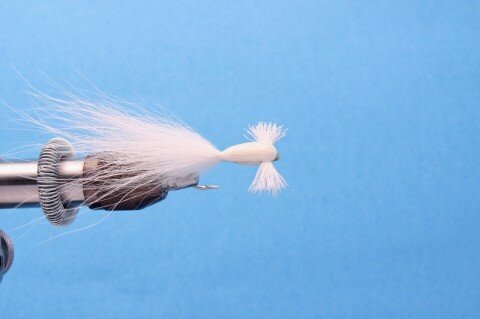

Filed under Largemouth, Saltwater